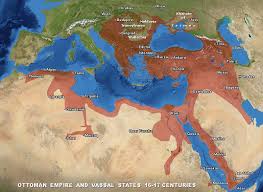The Rise and Fall of Empires: The Austrian Empire, The German Reich, and The Russian Empire
The ebb and flow of empires have been a constant theme throughout human history. Empires rise, they reach their zenith, and then they fall, often to be replaced by another. This cyclical pattern has been observed in numerous civilizations across the globe. In this discourse, we will delve into the rise and fall of three significant empires: The Austrian Empire, The German Reich, and The Russian Empire.
The Austrian Empire was a significant power in Europe from 1804 to 1867. Its origins can be traced back to the House of Habsburg, one of the most influential royal houses in Europe. The Habsburgs had a long history of ruling various territories across Europe, but it was with the establishment of the Austrian Empire that they reached their peak.
The empire’s rise can be attributed to strategic marriages that expanded their territories, military victories, and astute diplomacy. However, the empire’s decline began with its defeat in the Austro-Prussian War in 1866. This defeat led to significant territorial losses and marked the beginning of Prussia’s ascendancy as the dominant power in German-speaking Europe. In 1867, facing internal pressures from various nationalistic movements within its borders, the empire was reformed into Austria-Hungary.
The German Reich or the German Empire was established in 1871 under Prussian leadership after their victory in the Franco-Prussian War. This marked a significant shift in power dynamics within Europe as Germany emerged as a major continental power.
The empire’s rise can be attributed to its industrial prowess, military strength, and strategic diplomacy under Otto von Bismarck’s leadership. However, its downfall began with World War I when it found itself on the losing side. The Treaty of Versailles that ended World War I imposed heavy penalties on Germany, leading to economic hardship and political instability. This eventually paved the way for the rise of Adolf Hitler and the Third Reich.
The Russian Empire, spanning three continents—Europe, Asia, and North America—was one of the world’s largest empires. Its origins can be traced back to the 16th century under Ivan the Terrible, but it was Peter the Great’s reign in the late 17th and early 18th centuries that marked its rise as a significant global power.
The empire’s expansion was driven by military conquests, exploration, and colonization. However, its downfall began with social unrest due to economic disparity and political repression. The situation was further exacerbated by military defeats in World War I. The February Revolution of 1917 marked the end of the Russian Empire, leading to a brief period of provisional government before the establishment of Soviet Russia.
In conclusion, these three empires—the Austrian Empire, The German Reich, and The Russian Empire—each rose to prominence through a combination of military strength, strategic diplomacy, and economic development. However, they also fell due to a variety of factors including military defeat, internal unrest, economic hardship, and changing power dynamics. Their rise and fall serve as poignant reminders of the transient nature of power and influence in our world’s history.
